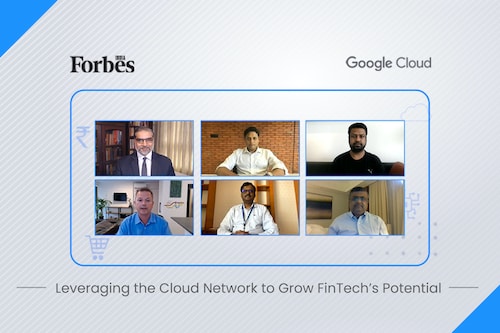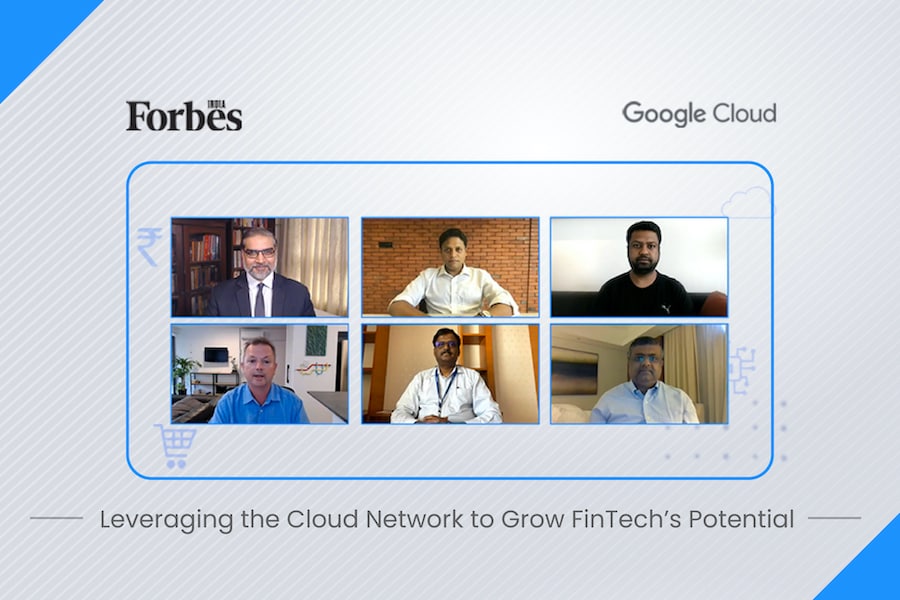Evolve or perish may be the only mantra for Indian FinTech
What are the best practices and performance standards that FinTechs must adhere to while embracing digital transformation to remain competitive?


 The next FinTech major may very well be born out of India, thanks to the emergence of startups that have a technology-first approach to solving emerging market problems.
The next FinTech major may very well be born out of India, thanks to the emergence of startups that have a technology-first approach to solving emerging market problems.
But before getting there, Indian FinTechs may need to deal with the challenge of retaining a customer who is spoilt for choice in a hyper competitive market. That was the key topic of discussion in the FinTech session of The Next Wave of Cloud Innovation, a series of industry-focused roundtable discussions, organized by Forbes India, in association with Google Cloud.
A key question facing Fintech in the coming months and years would be dealing with the challenge of knowing a customer when regulations gradually strip away the tools required to do so, said Google Cloud’s Stuart Houston. “The use of cookies for personally identifiable information is going away fairly quickly in the next year or two," the director, Financial Services for the Asia Pacific region at Google Cloud added. “So I think the industry is going to need to think through how do we best acquire those customers given in some cases, we know a little bit about them."
“It’s a really interesting problem statement in the financial services industry, Fintechs (in particular) where majority customers are acquired through digital channels," given that identifying and tracking customers through cookies for example will likely go away in the next year or two, Google Cloud’s Stuart Houston pointed out.
“So I think the industry is going to think through how do we best acquire those customers given in some cases we know little bit about them because they are existing customers or they are prospects that are coming through our digital storefront whether it"s an app on the phone, or through our website," said the Director, Financial Services for the Asia Pacific region at Google Cloud. “How do we understand the context of those customers and deliver that compelling experience?"
Stuart cited the example of UK-based challenger bank Monzo Bank Ltd. which built its ecosystem on Google Cloud.
“They"ve taken this idea at heart and so have many of our other clients in the FinTech space of actually building that single physicalized view of the customer in Google Cloud that then services all the acquisition, growth and retention strategies," Houston said. Underpinning those strategies are usually machine learning algorithms run at scale in the cloud that are able to offer “compelling enough experiences" that keep customers from moving away, he said.
That’s a challenge that CoinSwitch’s Ashish Singhal knows too well. “We believe that the next Google (or) the next Facebook would come from India and will be built on the blockchain itself," the founder and CEO of the Indian startup that seeks to democratize cryptocurrency investments said.
“This cryptocurrency revolution is providing a level playing field for retail users to invest in these startups at a very early stage itself," Singhal said, referring to investing in private market instruments through blockchain technology. To retain customers one needs to educate them, he opined.
And implementing this learning at scale is Computer Age Management Services Ltd. or CAMS. India’s largest mutual fund transfer agency to asset management companies chose to operate an open architecture software platform model where asset managers or brokers can hook up to the firm’s application programming interface or APIs for a transparent and holistic view of a customer, Chief Platform Officer Ravi Kethana said.
“We provide a lot of real-time data, analytics and insights for our customers," Kethana said. Building on the Account Aggregators platform envisioned by the Reserve Bank of India, the firm rolled out CAMS FinServ, an RBI-licensed platform that enabled rapid, secure and consent-based sharing of financial asset information between the customer, financial information providers (FIP), and financial information users (FIU). This in turn helped a customer to identify financial assets across banks, stockbrokers, mutual funds, pension funds, insurance providers and others.
With the COVID-19 pandemic wreaking havoc, especially when it came to economic wellbeing, a lot of customers chose to stop their Systematic Investment Plan or SIPs, Kethana said. “With the insights we were able to come up with a way to show a roadmap for a customer on how to earn more (by continuing to invest in mutual funds)," he added. “A lot of times financial literacy is a problem so people need to be told about it."
With double-digit growth and an addressable market size of over 1.4 billion people, that is an opportunity that is too costly to miss.
Roughly 67 percent of the more than 2,100 FinTech entities in operation have been set up in the last five years, making India’s FinTech market the world’s fastest growing, according to Dezan Shira & Associates. The country’s FinTech market is projected to grow to US$84 billion by 2025 from US$31 billion in 2019. India produced 16 FinTech unicorns as of June 2021, according to EY.
“In the new digital economy, embedded finance as a theme will be a major enabler of the future," pointed out Stuart from Google Cloud. “And in that world of embedded finance, it will be very, very easy to move organizations when something doesn’t work in your favour as a customer," he cautioned. “And I think that an open ecosystem connected through micro services is going to be a core differentiating factor for those FinTechs that will continue to grow, become a unicorn and beyond."
To survive in an industry that is rapidly commoditising, the panelists agreed that FinTechs would have to increasingly adopt an Open Banking platform to holistically serve their customers. And that would need a real-time execution driven model that resides in the cloud.
The pages slugged ‘Brand Connect’ are equivalent to advertisements and are not written and produced by Forbes India journalists.
First Published: Dec 10, 2021, 15:33
Subscribe Now